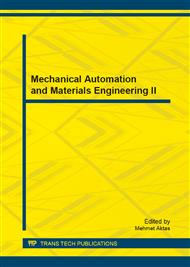p.267
p.272
p.277
p.282
p.286
p.291
p.296
p.303
p.308
The Fine-Structure Interpretation and Favorable Objective Evaluation of Quanyiduan in Fulongquan Area
Abstract:
According to the needs of exploration and development, the main purpose of the Fulongquan region layer (Quanyiduan) to explain the fine structure and a favorable objective evaluation. Fine structural interpretation based on high-resolution, high fidelity and high signal to noise ratio of seismic data, the use of Landmark Interaction software layer on the purpose well - seismic calibration, determine the target layer of seismic reflection and seismic wave group phase characteristics of other wells in the area of information work carried out under the lateral auxiliary tracking method with variable velocity mapping layers of the structure plan aims to implement the target zone traps. In the structural interpretation based on the use of coherent technology and time slice for fault identification, combined with relevant geological data on the target layer of oil a comprehensive evaluation, selection of a good oil and gas traps, providing for the exploration and development goals.
Info:
Periodical:
Pages:
286-290
Citation:
Online since:
June 2014
Authors:
Price:
Сopyright:
© 2014 Trans Tech Publications Ltd. All Rights Reserved
Share:
Citation:


